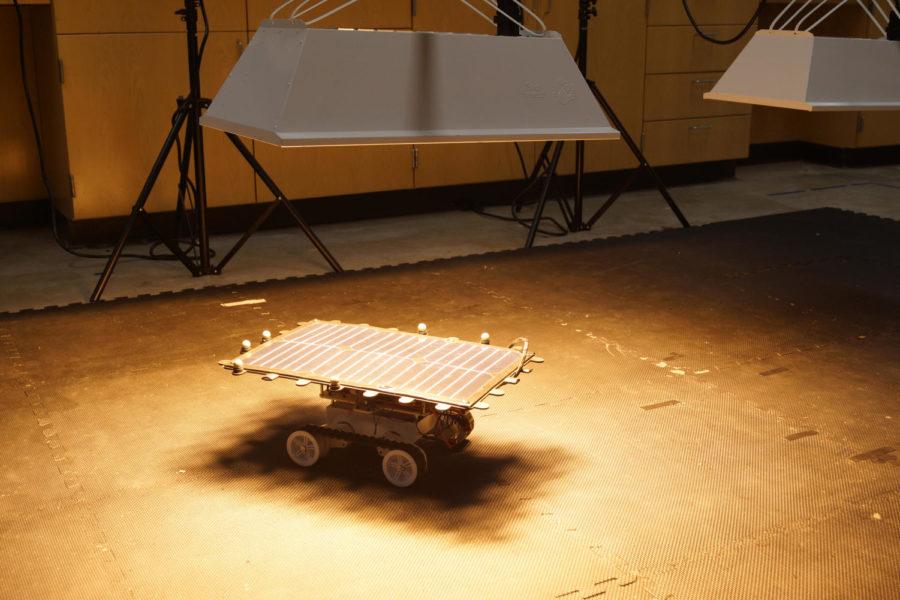Solar-powered robots open new pathways for workforce, safety
February 24, 2015
This day in age, energy consumption is constantly increasing and so is the desire for more efficient technology to assist with environmental issues, agriculture or surveillance and even help people in their daily lives.
An assistant professor of aerospace engineering, Ran Dai, who has previous experience working on power systems on the Boeing 787 at the University of Washington, along with her team, is working on a project that has the potential of meeting both of these increasing demands — a solar-powered robotic system.
Adam Kaplan, graduate in aerospace engineering, Nathan Kingry and Kishan Patel, both seniors in aerospace engineering are members of Dai’s team.
When some think of solar-powered robots, the image of the Mars rover rolling around the surface of a foreign world taking pictures and gathering samples may come to mind. However, the ISU team is working on a more close-to-home way for solar-powered robots to help humanity.
Work must be done in order to make our society function. Work that Kaplan said can be, “dull, dirty, and dangerous.”
When a particular job requires people to do the same routine again and again, day in and day out — dull — complacency may follow. Studies have been done that illustrate the dangers of complacency both to the worker’s safety and job performance.
Instead of having to send people into an area that is highly radioactive —dirty — or disarm a bomb in the middle of a war zone — dangerous — people will someday be able to use this type of technology to keep more human workers away from these dangerous scenarios.
For some, working in an area that is filled with highly-toxic radiation or bullets flying through the air is not likely to happen. However, the technology being developed at Iowa State will, in theory, be able to be modified to every user’s specific needs.
“The components will be very general so the robot can be adapted to his/her specific needs,” Dai said.
In an ideal situation, every day would be a sunny day to make these solar-powered robots happily function at their best. The reality however is not quite so bright, and this is a challenge the team is working on.
To counter this problem, the robot is designed to seek out areas that are more dense in solar radiation than in others via GPS navigation and infrared mapping. If the weather is cloudy, the robot is able to go into a sleep mode to conserve energy.
“[This challenge] has been like juggling on a unicycle,” Kaplan said.
However, during the span of a single semester, the team has seen great improvement in the accuracy of the robot’s ability to find these energy sources.
One might simply suggest the best way to operate these machines is to use a different energy source, but Dai said solar power is best suited for long-term operations.
“These vehicles would not be constrained by the size of a battery,” Dai said.
Applying this type of energy source to unmanned aerial vehicles is another goal of the team. With it, unmanned aerial vehicles could assist in farming operations such as crop dusting, and they could also assist in search and rescue operations.
The team has already produced two prototypes that will help pave the way for what the team believes to be a revolution in time-dependent operations.
Dai said she hopes the general public will start seeing more of this type of technology within two years.
Though much more work needs to be done, Kaplan said the team has been able to conquer some amazing obstacles together, and will continue to do so.
“It’s not every day that you get to spend time with such a great team on something that has such great implication,” Kaplan said.

















